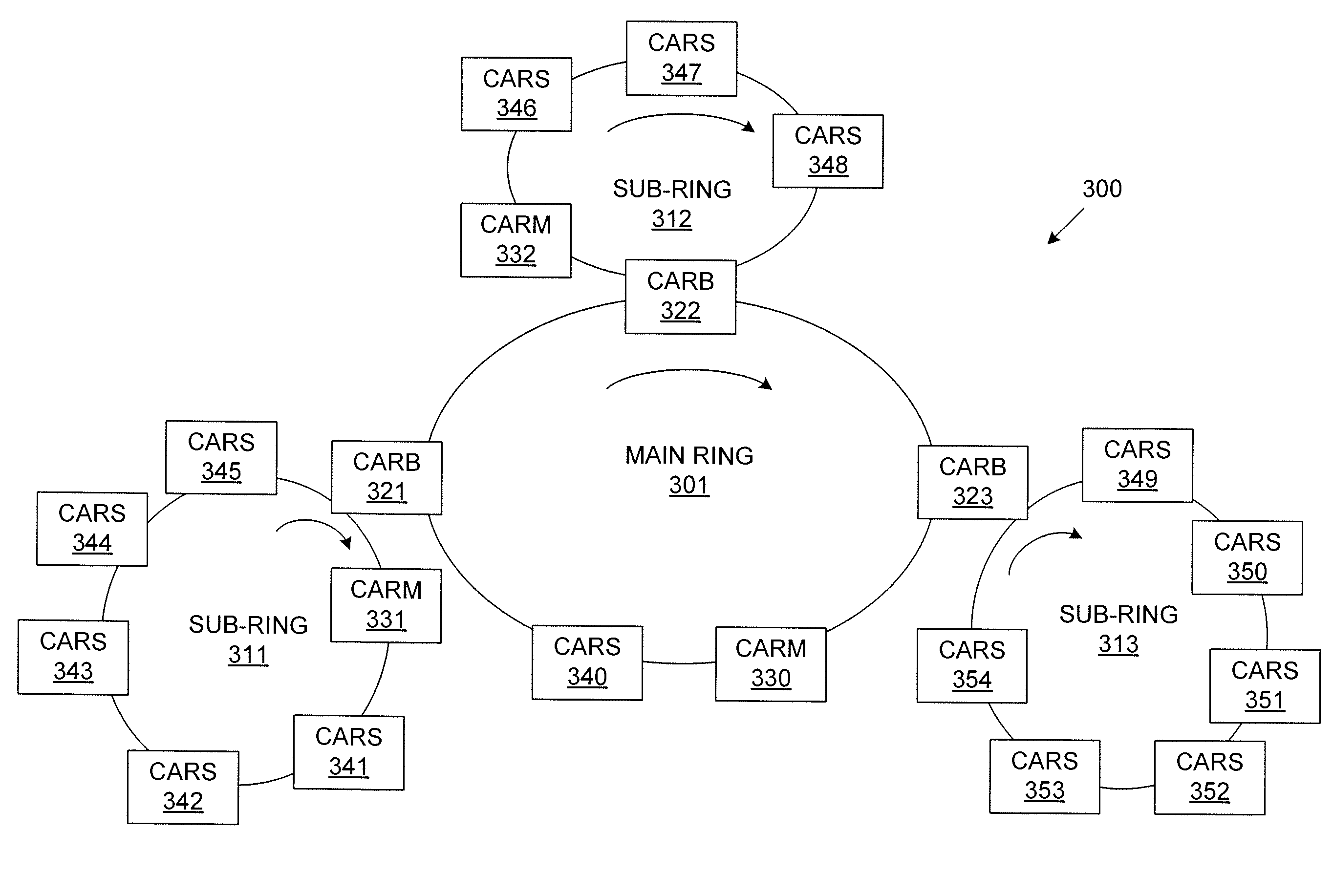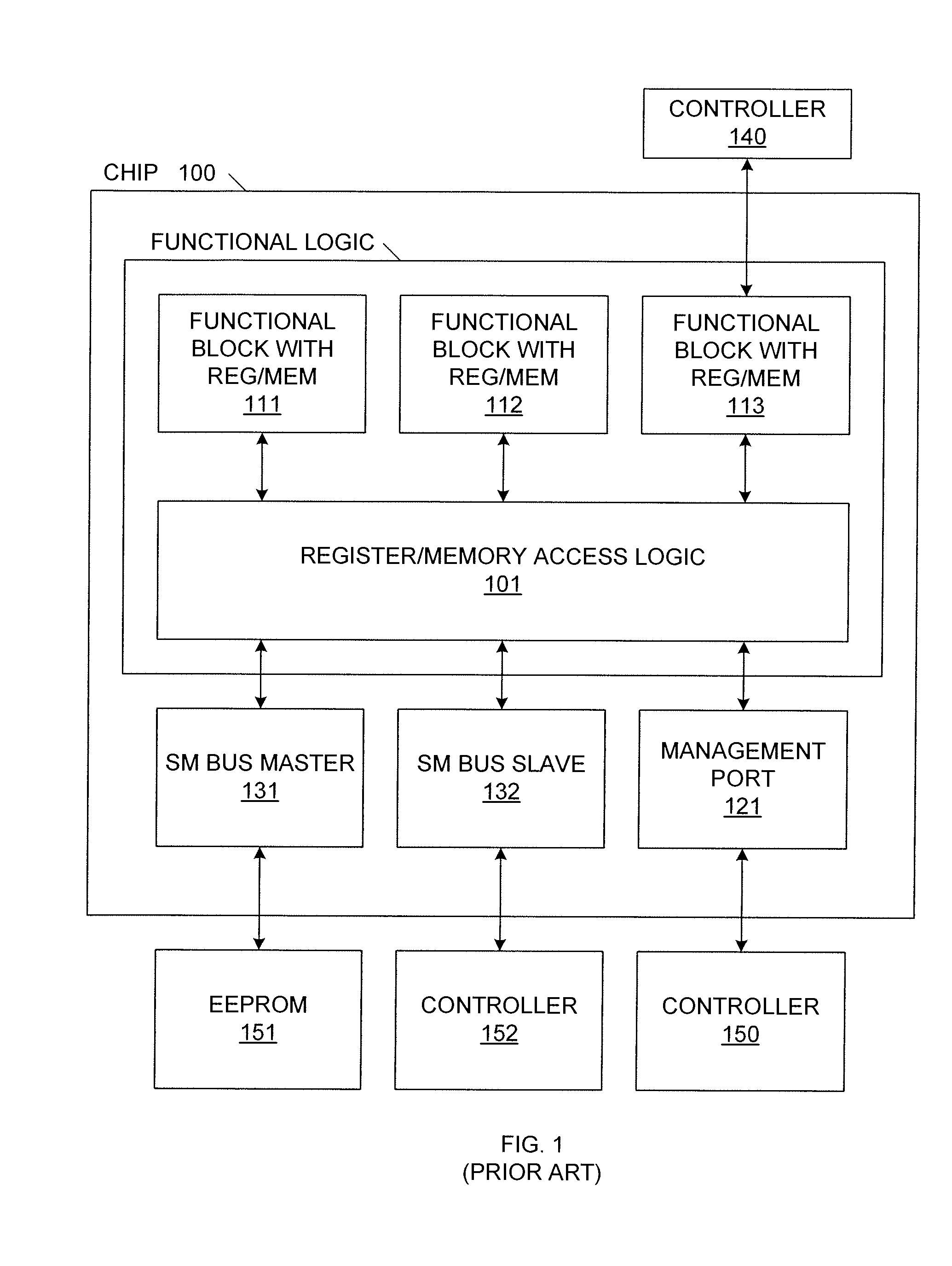Common Access Ring System
- Summary
- Abstract
- Description
- Claims
- Application Information
AI Technical Summary
Benefits of technology
Problems solved by technology
Method used
Image
Examples
Embodiment Construction
[0031]As used herein, software or management software refers to any controlling entity that wants access to the on-chip registers / memories. Such software or management software can include, for example, a software, firmware or device driver running in a processor, a software, firmware or device driver running in a controller (mainly for debugging purposes), or a module inside the chip which acts as a chip initialization controller.
[0032]The present invention provides a Common Access Ring (CAR) architecture, which exhibits a ring structure. Different numbers and different types of nodes can be placed on the CAR. These nodes are daisy-chained together to form the ring. Control and data of the ring are packaged together and sent from node to node in the form of a message. The ring is unidirectional, such that messages always travel in one direction within a ring. Messages are transmitted from a node via a downstream ring interface and are received at the next node via an upstream ring ...
PUM
 Login to View More
Login to View More Abstract
Description
Claims
Application Information
 Login to View More
Login to View More - R&D
- Intellectual Property
- Life Sciences
- Materials
- Tech Scout
- Unparalleled Data Quality
- Higher Quality Content
- 60% Fewer Hallucinations
Browse by: Latest US Patents, China's latest patents, Technical Efficacy Thesaurus, Application Domain, Technology Topic, Popular Technical Reports.
© 2025 PatSnap. All rights reserved.Legal|Privacy policy|Modern Slavery Act Transparency Statement|Sitemap|About US| Contact US: help@patsnap.com



